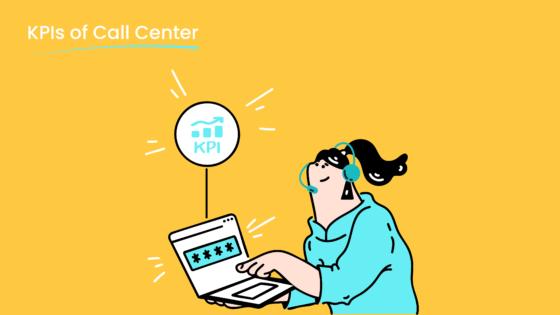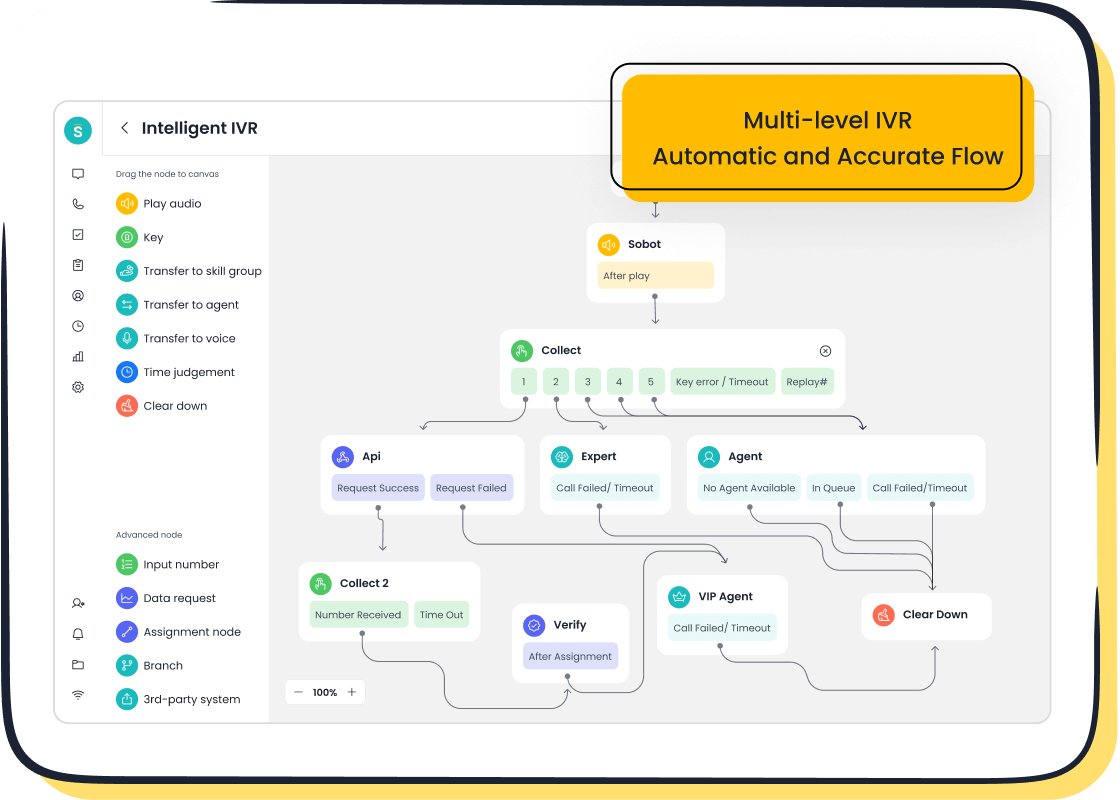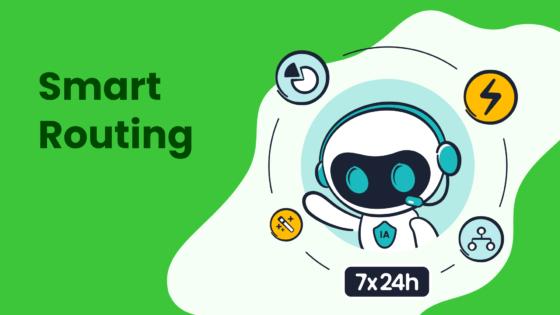Call Center KPI Dashboard Review for Enhanced Performance

Modern call centers rely on real-time insights to drive better outcomes. A call center KPI dashboard transforms operations by enabling data-driven decisions and proactive strategies. Teams see improvements in customer satisfaction and business growth when they track key metrics like NPS, CES, and AHT. Sobot AI and the Sobot call center deliver these benefits, as shown by Weee!’s success. Businesses that adopt a call center KPI dashboard move from reactive support to continuous improvement.
Top Call Center KPI Dashboard Solutions

Call centers today rely on advanced dashboards to monitor performance and drive operational improvements. The right call center KPI dashboard empowers managers and agents with actionable insights, helping businesses deliver better customer experiences and achieve growth. Below, this section reviews leading dashboard solutions, highlighting their strengths and the industries they serve.
Sobot Voice/Call Center Dashboard
Sobot stands out as a comprehensive solution for businesses seeking robust call center analytics and seamless customer engagement. Originating in Singapore, Sobot serves a diverse range of industries, including retail, financial services, gaming, education, and enterprise services. Well-known brands such as Samsung, OPPO, HP, Luckin Coffee, and Weee! trust Sobot for their customer contact needs.

Sobot’s Voice/Call Center Dashboard offers:
- Intelligent IVR: Businesses customize greetings and menus, routing calls to the right agents or teams using a drag-and-drop interface. This feature goes live in real time, ensuring flexibility.
- Unified Workspace: Agents manage calls and customer information in one place, improving efficiency and reducing errors.
- Real-Time Monitoring and Analysis: Managers track call data instantly, identifying trends and making quick decisions.
- Bulk Outbound Task Automation: The dashboard assigns leads based on priorities and SLAs, streamlining outbound campaigns.
- Global Number Availability: Companies access phone numbers worldwide, supporting international operations.
- AI-Powered Voicebot: The system recognizes customer intent and interacts intelligently, reducing agent workload.
- Seamless Integration: Sobot connects easily with CRM and other business systems, supporting encrypted data transfer for security.
- 99.99% SLA Uptime: Businesses benefit from high system stability and reliability.
Sobot’s solution supports over 10,000 brands and handles millions of communications daily. The dashboard’s analytics help managers optimize team performance, reduce average handle time, and increase first-contact resolution rates. Sobot’s omnichannel solution further enhances customer service by integrating voice, chat, email, and social media into a unified platform. Companies like Weee! have achieved measurable improvements in agent efficiency and customer satisfaction using Sobot’s dashboard.
Learn more about Sobot Voice/Call Center Dashboard
Tip: Sobot’s dashboard adapts to different industries, making it a flexible solution for businesses with varied customer service needs.
Five9 Dashboard
Five9 ranks among the most widely adopted call center KPI dashboard solutions in 2024. The platform supports multiple dialing modes, including Predictive, Power, Progressive, Preview, and manual, optimizing lead penetration and conversion. Five9’s dashboard features:
- Real-time Do Not Call list management and TCPA compliance.
- CRM CTI screen pops and local caller ID for personalized customer interactions.
- Digital Engagement dashboard with intelligent omnichannel routing, automated agent assist, IVA chatbots, and rich messaging (attachments, surveys, emojis, video calls).
- Intelligent Virtual Agent (IVA) with 25 natural-sounding voices, sentiment analysis, speech recognition, and a no-code drag-and-drop call flow design tool.
- Over 120 customizable KPI reports on real-time and historical data.
- Advanced conversational AI designer for smart IVR systems and virtual assistants.
- Verticalized outbound functionality tailored for different markets.
Five9’s call center analytics enable businesses to tailor reports, automate customer service interactions, and improve first-contact resolution. The dashboard’s deep customization and AI-driven automation set it apart in the market.
Genesys Cloud CX Dashboard
Genesys Cloud CX provides a powerful solution for tracking and improving call center performance. The dashboard monitors key metrics such as agent competency, employee satisfaction, quality of interactions, first contact resolution (FCR), customer satisfaction (CSAT/NPS), average handling time (AHT), and sales conversion. Features include:
- Unified, gamified scorecards and dashboards for agents and managers.
- Real-time and historical performance data to identify gaps and guide coaching.
- Gamification elements like leaderboards and competitions to motivate employees.
- Support for onboarding, learning, coaching, and quality assurance.
- Quality evaluation forms and speech/text analytics for detailed interaction analysis.
- Post-interaction surveys (CSAT/NPS) integrated across channels.
- AI-powered CX dashboards collecting and analyzing data from multiple sources.
Genesys Cloud CX’s call center analytics help managers improve agent competency, operational efficiency, and customer satisfaction. The dashboard’s real-time reporting and customizable metrics enable proactive identification of trends and issues, transforming customer interactions into meaningful conversations.
Talkdesk Live
Talkdesk Live delivers a solution focused on real-time decision-making for call center managers. The dashboard includes configurable and filterable KPI widgets that display metrics such as Service Level, Average Wait Time, Answered Contacts, Arrived Contacts, Count of Agents Logged In, Live Agents List, Live Contacts in Queue, Missed Contacts, and Unassigned Contacts List. Key features:
- Widgets refresh in real time, showing live metrics for immediate monitoring.
- Custom threshold alerts notify admins and supervisors when issues arise.
- Managers coach agents by dropping into calls and reassign conversations promptly.
- Personalized dashboards for continuous supervision.
- 24/7 monitoring of calls and digital interactions.
- Seamless reassignment of conversations across email, chat, and SMS.
- Real-time visibility into KPIs like service level, abandon rate, wait time, and inbound contacts.
Talkdesk Live’s call center analytics empower managers to identify trends, operational inefficiencies, and coaching opportunities. The dashboard motivates teams by providing immediate feedback and supports proactive management for improved efficiency and customer service quality.
Other Notable Solutions
Several other platforms offer robust call center KPI dashboard solutions. These include:
- Nextiva: Delivers real-time call activity overview, customizable dashboards, wallboards, and reporting tools with data-driven analytics to predict call trends.
- Call Criteria: Uses AI-powered solutions to enhance client interactions and agent performance.
- Cisco Systems: Provides enterprise-grade call center analytics and reporting.
- Oracle: Offers integrated solutions for large-scale contact centers.
- Genpact: Delivers analytics-driven solutions for operational improvement.
| Solution | Key Features | Industries Served |
|---|---|---|
| Sobot | AI, omnichannel, global numbers, IVR, analytics | Retail, finance, gaming, education |
| Five9 | AI, omnichannel, dialers, compliance, reporting | BPO, finance, healthcare |
| Genesys Cloud CX | Gamification, AI, analytics, coaching | Enterprise, telecom, retail |
| Talkdesk Live | Real-time widgets, alerts, coaching | SMB, enterprise, e-commerce |
| Nextiva | Custom dashboards, wallboards, analytics | SMB, enterprise |
| Call Criteria | AI, agent performance, analytics | BPO, finance, insurance |
| Cisco Systems | Enterprise analytics, reporting | Large enterprise |
| Oracle | Integrated analytics, scalability | Enterprise, telecom |
| Genpact | Analytics-driven solutions | BPO, enterprise |
Note: The contact center analytics market recognizes Five9, Genesys, Cisco Systems, and Oracle as key vendors, reflecting their widespread adoption and influence in providing call center KPI dashboard solutions.
Call center analytics play a central role in these platforms, enabling businesses to track performance, optimize resources, and deliver superior customer experiences. Sobot’s solution stands out for its adaptability, global reach, and integration capabilities, making it a preferred choice for companies seeking a reliable and scalable call center KPI dashboard.
What Is a Call Center KPI Dashboard?
Definition and Purpose
A call center KPI dashboard is a digital tool that displays key performance indicators for call center operations. Managers and agents use this dashboard to monitor real-time data and track progress toward goals. The dashboard helps teams identify strengths and weaknesses quickly. It supports decision-making by showing trends and patterns in customer interactions. Companies rely on call center software to provide these dashboards, making it easier to manage daily activities and improve results. The main purpose is to boost efficiency, enhance service quality, and support a better customer experience.
Key Metrics Tracked
Call center KPI dashboards track several important metrics. These metrics help managers understand how well the team performs and where improvements are needed.
- Customer Satisfaction (CSAT): Measures how happy customers feel after an interaction.
- First Contact Resolution (FCR): Shows the percentage of issues solved during the first call.
- Average Handle Time (AHT): Tracks the total time spent on each customer interaction.
- Average Hold Time: Records how long customers wait on hold.
- Abandonment Rate: Indicates the percentage of callers who hang up before reaching an agent.
Other common metrics include service level, average wait time, and average talk time. These numbers give a clear picture of call center performance. Call center software collects and displays this data, helping managers set targets and monitor progress.
Role in Call Center Software
Call center software uses KPI dashboards as a central feature. The dashboard connects with other tools such as CRM systems, workforce management, and quality assurance platforms. This integration allows data from different sources to appear in one place. For example, platforms like AmplifAI and Genesys unify data from coaching, surveys, and workforce management. The dashboard provides role-based views, so agents and managers see the information most relevant to their jobs.
| Platform | Integration Type | Dashboard Role | Data Sources Unified |
|---|---|---|---|
| AmplifAI | Unified data hub | Real-time KPI tracking | Yes |
| Five9 | Modular third-party | Real-time dashboards | No |
| Genesys | Native integration | KPI insights | Limited |
Call center software with integrated dashboards helps teams respond faster, improve agent performance, and deliver a better customer experience.
Call Center Analytics and Performance Tracking

Call center analytics play a vital role in transforming customer service operations. Companies use real-time analytics to monitor every interaction, identify trends, and make quick decisions. These tools help managers and agents improve efficiency, reduce costs, and deliver better customer experience.
Real-Time Data
Real-time analytics provide instant visibility into call center activity. Managers track metrics such as average handle time, call abandonment rate, and first contact resolution. Research shows that faster response times lead to higher customer satisfaction analytics and loyalty. For example, real-time data can increase first contact resolution by 42% and reduce average handle time by 15%. Sobot’s platform leverages AI and machine learning to deliver actionable insights, enabling teams to respond quickly and personalize customer service. Companies using real-time analytics see a 20% improvement in quality of service and a boost in customer retention. CMO Council Study highlights the impact of rapid responses on customer experience.
Agent Performance Metrics
Agent performance drives call center success. Call center analytics track calls answered per hour, call availability, occupancy rate, and average handle time. These metrics help managers identify skill gaps and optimize scheduling. Sobot’s dashboard uses predictive analytics to forecast call volumes and agent utilization, supporting workforce management. Performance analytics also enable personalized coaching and training, reducing handle times and improving resource allocation. Difficulty-adjusted scoring and aptitude forecasting provide deeper insights into agent performance, ensuring fair evaluations and proactive management.
Customer Experience Insights
Customer experience insights from call center analytics reveal patterns in satisfaction, loyalty, and retention. KPI dashboards track Net Promoter Score (NPS), Customer Effort Score (CES), and segment feedback by region or demographic. Interaction analytics help companies identify pain points and improve service delivery. Sobot’s AI-powered tools analyze sentiment and keyword trends, supporting closed-loop feedback and omnichannel consistency. By connecting customer satisfaction analytics with financial metrics, businesses gain a holistic view of customer service impact. These insights drive targeted improvements, increase promoter conversion rates, and enhance long-term loyalty.
Must-Have Features in Call Center KPI Dashboards
Real-Time Reporting
A modern call center software must provide real-time reporting to empower managers and agents with instant access to critical metrics. Real-time dashboards display up-to-date data such as call volume, average handle time, and customer satisfaction scores. These dashboards use dynamic charts and graphs, making trends and anomalies easy to spot. Supervisors can act quickly when issues arise, thanks to alerts and notifications for threshold breaches. Customization options allow each team member to focus on the metrics most relevant to their role. This immediate insight supports faster, more accurate decisions and helps maintain high service levels.
Tip: Real-time reporting enables call center software users to adjust staffing or workflows on the fly, improving operational efficiency and customer experience.
AI and Automation
AI and automation have become essential in call center software. AI-powered dashboards unify data from voice, chat, and social channels, providing a comprehensive view of performance. Automation streamlines reporting, compliance monitoring, and repetitive tasks, reducing manual effort. Predictive analytics help managers forecast trends and prepare for peak periods. AI-driven coaching tools offer personalized training suggestions based on real-time analytics. These features boost agent productivity and customer satisfaction by enabling data-driven decisions and proactive management.
Integration Capabilities
Integration capabilities ensure call center software works seamlessly with CRM systems, email, chat, and other business tools. Secure APIs allow data to flow between platforms, supporting unified reporting across all channels. This integration provides a centralized view of customer interactions, making it easier to track KPIs and manage multi-channel environments. Without strong integration, teams struggle to collect quality data and maintain workflow continuity.
Customization and Scalability
Customization and scalability allow call center software to adapt as business needs change. Dashboards should let users tailor layouts, filter data, and drill down into specific metrics. Custom alerts and notifications ensure timely responses to key performance indicators. As businesses grow, scalable dashboards support new channels and higher call volumes. Integration with other systems, such as ticketing tools, helps maintain a unified experience. These features enable continuous improvement and support long-term business growth.
How to Choose the Right Call Center Software
Evaluation Criteria
Selecting the right call center software requires a clear understanding of business needs and available features. Organizations should compare options using a structured approach. The following table outlines key evaluation criteria:
| Evaluation Criteria | Key Features and Considerations |
|---|---|
| Customization | Customizable widgets, flexible dashboard layouts, and options in basic or premium plans |
| Metrics Completeness | Tracks sales, customer experience, and both inbound and outbound call data |
| Data Analytics | Real-time dashboards, historical reports, and trend analysis |
| User Experience (UX/UI) | Modern, intuitive, and easy-to-use interface |
A strong call center software must also support real-time call monitoring, call recording, silent listening, and compliance monitoring. Sobot stands out with seamless integration capabilities, allowing businesses to connect with CRM systems easily. Its 99.99% uptime ensures reliable service, which is critical for global operations.
Implementation Steps
Implementing new call center software involves several steps. Companies should:
- Define KPIs that align with business goals.
- Schedule regular reviews to track progress.
- Use automation tools for efficient data collection and reporting.
- Share KPI results with the team to encourage accountability.
- Set realistic targets based on historical data.
- Benchmark against industry standards.
- Enable real-time tracking with dashboards and alerts.
- Analyze data to find trends and bottlenecks.
- Use KPI data for targeted training.
- Gather employee feedback to improve the solution.
- Foster a culture of continuous improvement.
Sobot’s call center software simplifies these steps with its unified workspace and easy integration, helping teams adapt quickly.
Measuring ROI
Organizations measure the ROI of call center software by comparing costs and gains. They calculate total cost of ownership, including licensing, training, and maintenance. Next, they benchmark performance metrics like average handle time and customer satisfaction before and after implementation. Cost savings from efficiency improvements and increased revenue from better service contribute to ROI. For example, Sobot’s solution helps reduce call times and improve customer satisfaction, leading to measurable financial benefits. The ROI formula is:
ROI = [(Net gains from investment – cost of investment) / cost of investment] x 100
Continuous monitoring of KPIs and software usage ensures ongoing optimization and maximum return.
Common Mistakes to Avoid
Selecting and implementing a call center KPI dashboard can transform customer service, but many organizations fall into common traps that limit success. Recognizing these pitfalls helps teams maximize the value of their dashboard investment.
Ignoring Integration Needs
A call center KPI dashboard must integrate smoothly with existing systems. When organizations overlook integration, they risk poor communication and fragmented data. Without a unified dashboard, stakeholders may not see the full customer journey. This lack of transparency can lead to inconsistent or delayed data, making it hard to spot trends or address issues quickly. Real-time monitoring tools become less effective if data does not flow seamlessly between platforms. Teams may also struggle to verify data accuracy, which reduces trust in reported KPIs. Consistent reporting and data sharing are essential for tracking progress and improving performance.
Tip: Always plan for integration with CRM, ticketing, and communication tools when choosing a call center KPI dashboard.
Overlooking User Training
User training is critical for successful adoption of any call center KPI dashboard. Without proper onboarding, agents may feel lost or unsure about their roles. This confusion lowers morale and increases turnover. Productivity drops, and customer experience suffers. Staff may resist new analytics tools if they do not understand how to use them. Comprehensive training and ongoing support help agents and managers use dashboards effectively. Change management strategies, including clear communication and support, ease the transition and boost adoption rates.
Underestimating Total Cost
Many organizations underestimate the total cost of ownership for a call center KPI dashboard. Costs include more than just software licenses. Teams must consider initial setup, integration with other systems, training, and ongoing maintenance. Internal meetings, governance, and change management also add to expenses. As usage grows, consumption-based pricing models can increase costs. High adoption rates improve cost-effectiveness by spreading fixed costs over more users. Ignoring these factors can lead to budget overruns and lower return on investment. A thorough cost assessment ensures the dashboard delivers long-term value.
A well-implemented call center KPI dashboard, like Sobot’s, supports integration, training, and cost transparency, helping organizations avoid these common mistakes and achieve better results.
Sobot Customer Success Story: Weee!
Challenges Faced
Weee! operates as America’s largest online Asian supermarket. The company manages thousands of daily orders and deliveries. Its customer service team faced several challenges. The existing IVR system lacked flexibility. Agents struggled with complex system switching and language barriers. Most customers lived in America, but the support team worked from Asia. Time zone differences made communication difficult. These issues slowed response times and reduced efficiency. The company needed a solution to unify customer interactions and improve service quality.
Sobot Solution
Sobot provided an advanced voice product and dashboard. The flexible IVR system allowed Weee! to customize greetings and route calls intelligently. Agents used a unified workspace to manage calls and customer data. Sobot’s dashboard delivered real-time call center analytics, helping managers track performance and spot trends. Multilingual support enabled agents to assist customers in different languages. Time zone settings helped the team serve users across regions. Sobot’s open API integrated with Weee!’s ticketing system, reducing the need for system switching. The solution streamlined customer service operations and improved agent workflow.
Sobot’s dashboard empowered Weee! to monitor key metrics and optimize team performance using call center analytics.
Results Achieved
Weee! saw measurable improvements after implementing Sobot’s solution. Agent efficiency increased by 20%. Resolution time dropped by 50%. The company achieved a customer satisfaction score of 96%. These results demonstrated the impact of real-time call center analytics and unified customer service tools. The flexible IVR and multilingual support helped agents resolve issues faster. Managers used dashboard insights to coach teams and maintain high standards. Weee! now delivers consistent, high-quality customer service to a diverse user base.
Read more about Weee!’s results
| Metric | Before Sobot | After Sobot | Improvement |
|---|---|---|---|
| Agent Efficiency | Baseline | +20% | Increased |
| Resolution Time | Baseline | -50% | Reduced |
| Customer Satisfaction | Baseline | 96% | Improved |
Selecting the right call center software helps organizations achieve operational success. Sobot and other leading solutions deliver measurable improvements in efficiency and customer satisfaction. Teams should review current call center software and identify gaps in performance. A demo or trial of advanced call center software provides valuable insights. Next steps include planning implementation, training staff, and monitoring KPIs for ongoing optimization.
FAQ
What is a call center KPI dashboard?
A call center KPI dashboard displays key performance indicators for call center operations. Managers and agents use it to track metrics like customer satisfaction, average handle time, and first contact resolution. Sobot’s dashboard provides real-time analytics for better decision-making.
How does Sobot’s call center KPI dashboard improve agent performance?
Sobot’s call center KPI dashboard offers real-time monitoring, predictive analytics, and unified workspaces. Agents see their performance metrics instantly. Managers use dashboard insights to coach teams, optimize schedules, and increase efficiency.
Can Sobot’s dashboard integrate with existing CRM systems?
Sobot’s call center KPI dashboard integrates seamlessly with popular CRM systems. The platform supports secure API connections, enabling unified reporting and data sharing. Integration helps businesses maintain workflow continuity and track customer interactions across channels.
What metrics does Sobot’s call center analytics track?
Sobot’s call center analytics track customer satisfaction scores, average handle time, first contact resolution, call abandonment rate, and agent occupancy. The dashboard also monitors global call volumes and supports multilingual reporting for international teams.
Is Sobot’s call center KPI dashboard scalable for growing businesses?
Sobot’s call center KPI dashboard supports customization and scalability. Businesses can tailor dashboard layouts, add new channels, and manage higher call volumes as they grow. The platform’s 99.99% uptime ensures reliable performance for organizations of any size.
See Also
Effective Ways To Improve Call Center Performance Using Monitoring
Essential Best Practices For Managing Call Center Quality
Best Ten Call Center Analytics Tools To Use In 2024
Comprehensive Review Of Leading Contact Center Solutions 2024
Complete Guide To Software For Call Center Quality Assurance
